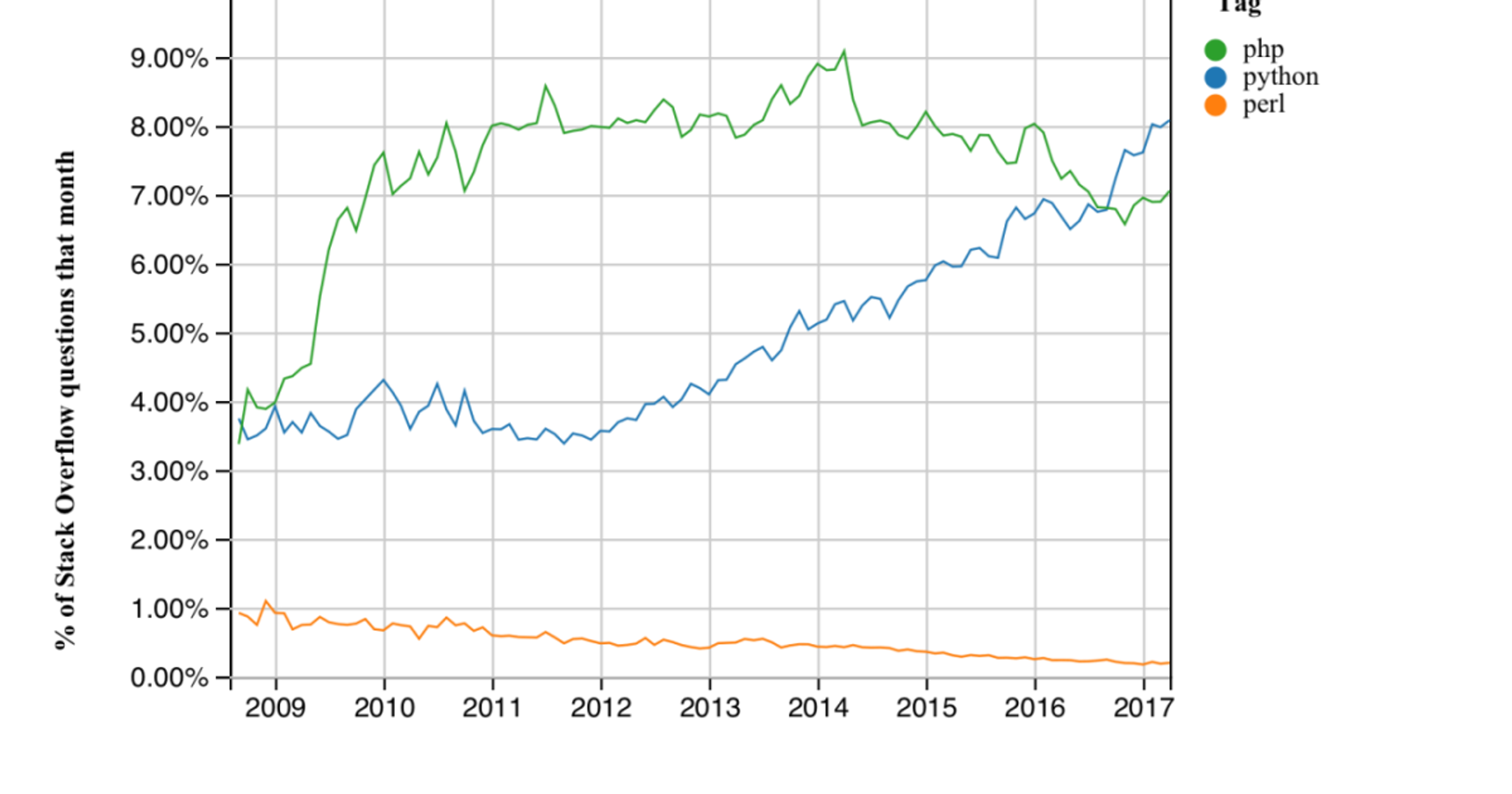On a typical day, developers ask over 8,000 questions on Stack Overflow about programming problems they run into in their work. Which technologies are they asking about, and how has that changed over time? Today, we're introducing the Stack Overflow Trends tool to track interest in programming languages and technologies, based on the number of Stack Overflow questions asked per month. For example, we could compare the relative usage of three programming languages.

Here, we can see that questions about the Python programming language have become rapidly more common over the last few years. (In data from Stack Overflow Talent we've seen the same expansion in companies looking for Python developers). PHP was growing for several years, but has since leveled off. Perl was never as big a presence on Stack Overflow, and questions about it have become steadily less common in the last 9 years. Measuring developer interest based on Stack Overflow questions isn't perfect: some technologies might inspire more questions among its users than others. But we've found it's a simple measure that gives useful insights into the developer ecosystem. It's especially useful for measuring changes over time: when we see a rapid growth in the number of questions about a technology, it usually reflects a real change in what developers are using and learning. Here we'll share a few examples of insights we can extract from the Stack Overflow trends tool.
JavaScript frameworks
JavaScript open-source web frameworks show some of the most interesting patterns of growth and decline.
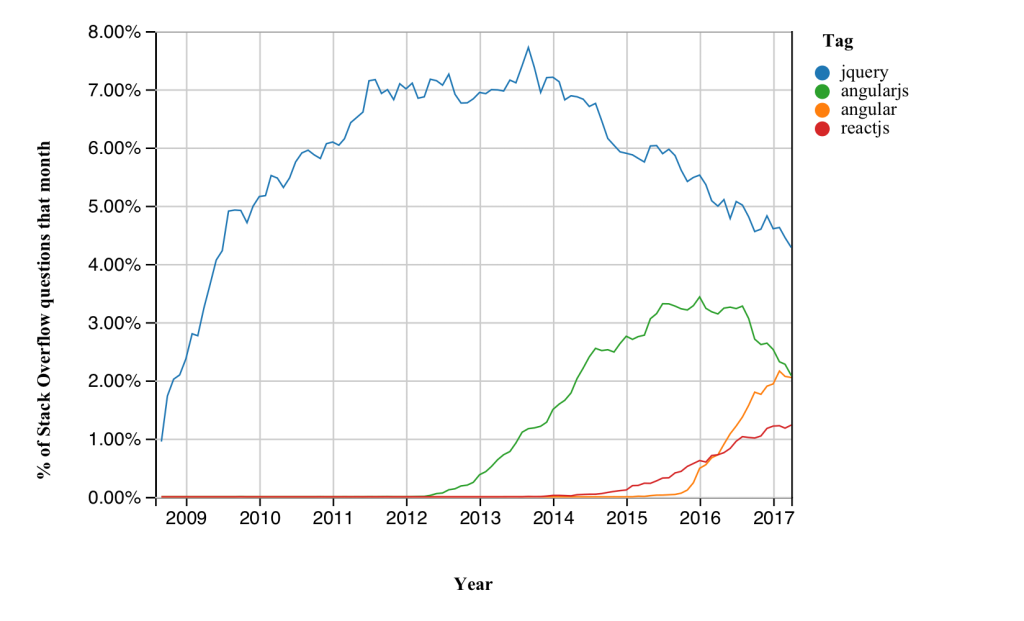
JQuery used to be among the most popular tags on Stack Overflow (as some have humorously observed), but it has made up a smaller share of questions as newer web frameworks have been introduced. There's been extraordinary growth of the angularjs tag (representing the first version of the framework) since 2013, then a quick shift to the angular tag (representing subsequent versions). We also see fast growth in the React library. These tags are among the most prominent JavaScript projects on the site. Smaller web frameworks show a brutal life cycle, where some show rapid growth then decline over the span of a few years.
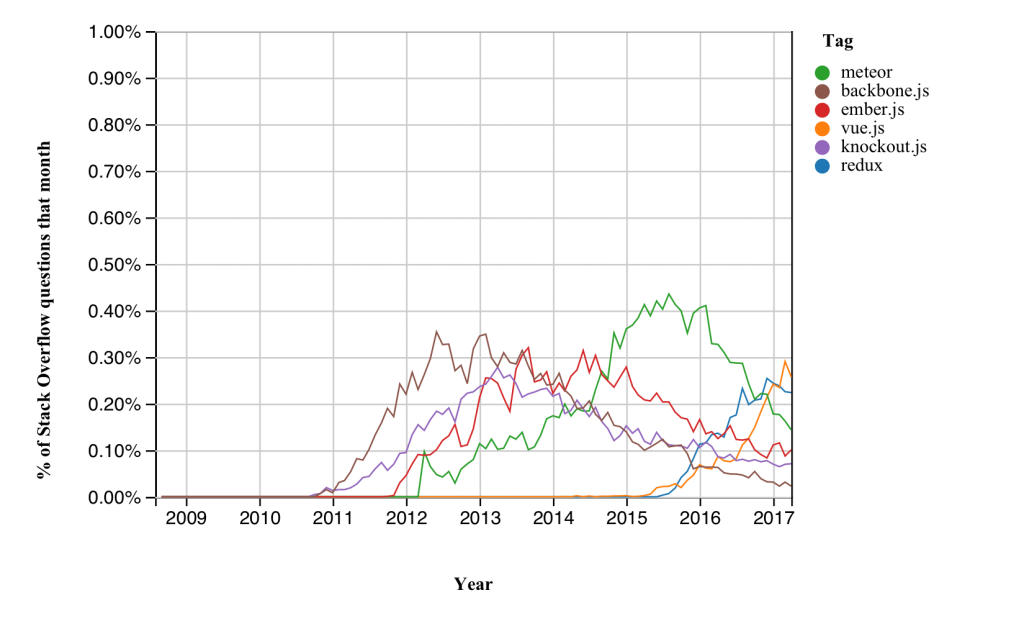
The Vue.js framework have shown quick adoption (and in terms of year-over-year growth is one of the fastest growing tags on the site). Frameworks like Backbone.js, Ember.js, and more recently Meteor appear to be in the later stages of the life cycle. Overall, front-end web development has largely been moving away from closed-source plugins, including Adobe Flash or the now-deprecated Microsoft Silverlight. In 2016 these each made up less than .1% of Stack Overflow questions.
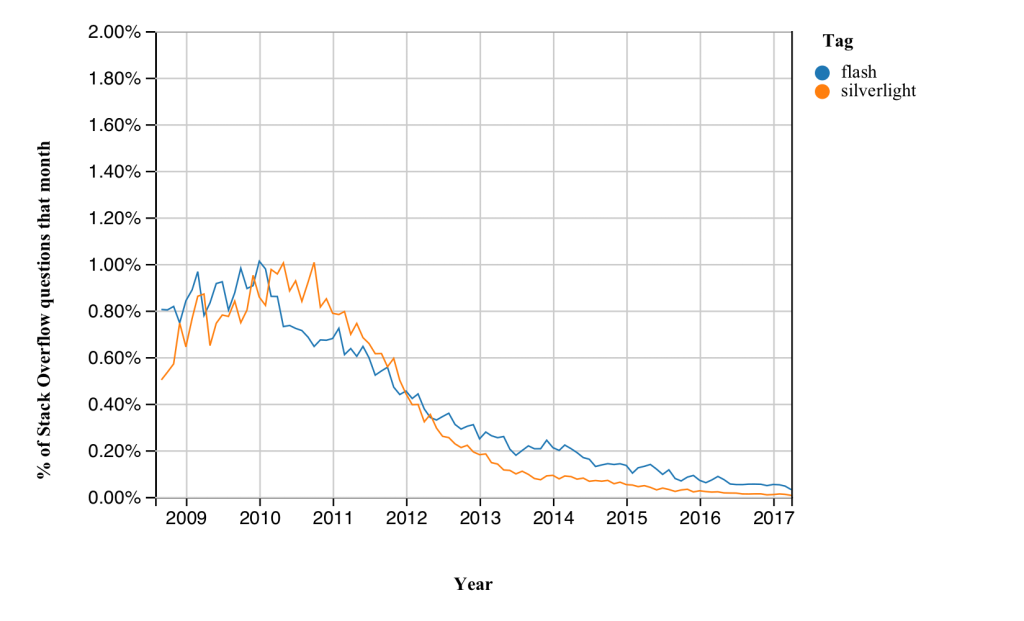
Data Science and Big Data
Technologies used for data science have shown particularly rapid growth over the last few years.
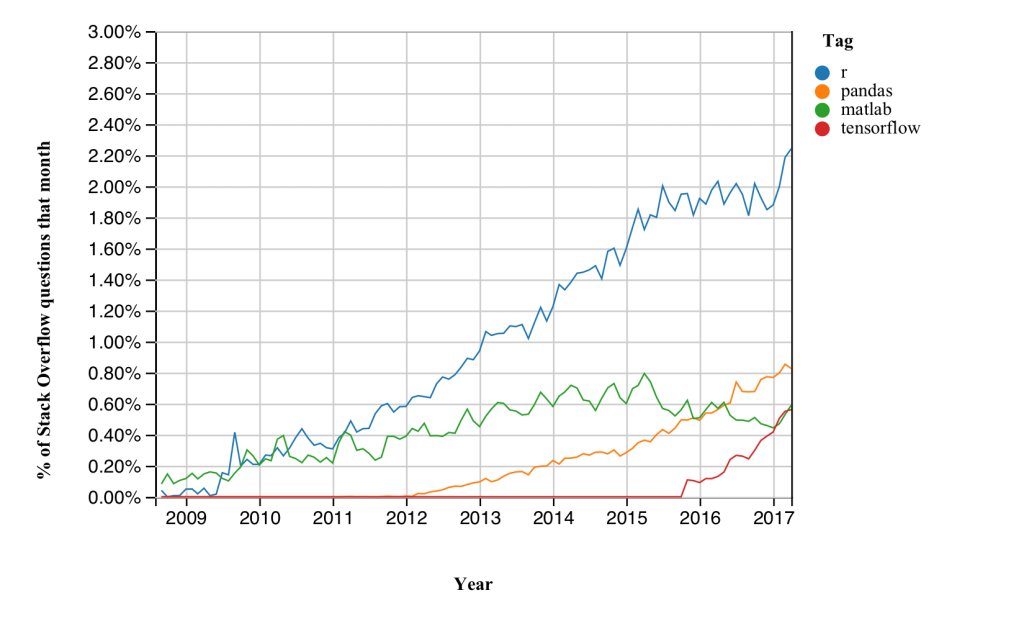
The R statistical programming language has shown consistent growth, as has pandas, a popular library for data science in Python. The closed source MATLAB language was growing for most of the lifetime of the site, but has more recently leveled off and may be shrinking. TensorFlow, Google's open-source machine learning framework, was introduced only in late 2015, but it's been growing at an extraordinary pace. Among the 500 largest tags, only swift3 has shown faster growth in the last year. Similarly, there's been expansion of interest in big data frameworks. We can compare several major Apache open-source projects for storing and processing large datasets.
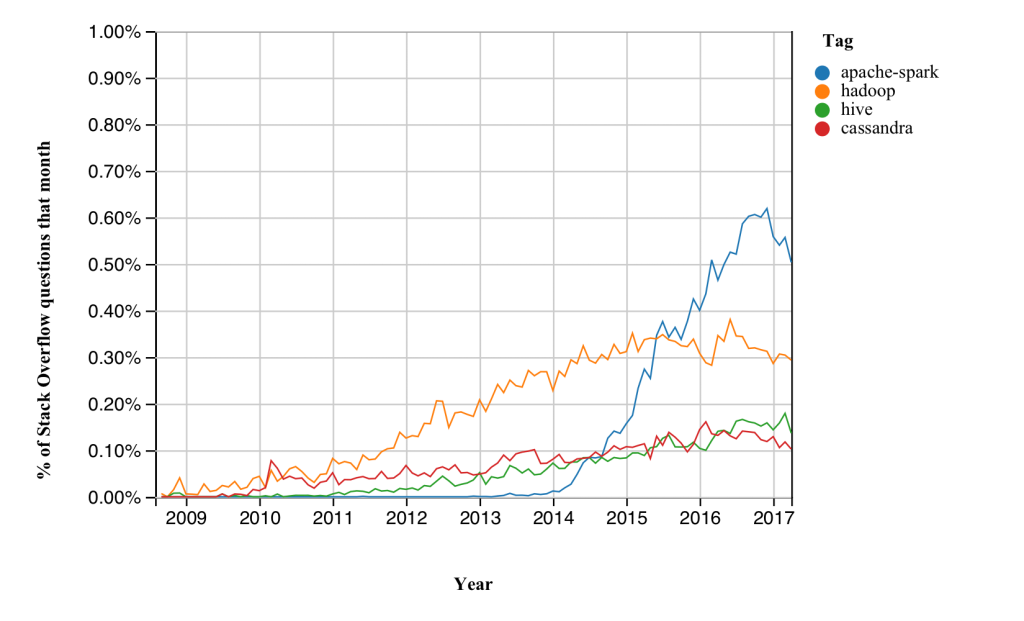
Hadoop has grown since 2009, and so more recently has Hive, a query system built on top of Hadoop. Interest in Cassandra has remained steady for several years. But Spark shows the fastest surge of adoption, becoming the most asked about technology just a few years after its introduction.
Try it yourself!
Don't see your favorite language, technology, or framework in this post? Use the Stack Overflow Trends tool to create your own graphs, and see what you can learn about how the developer ecosystem is changing and where it might be going in the future.
